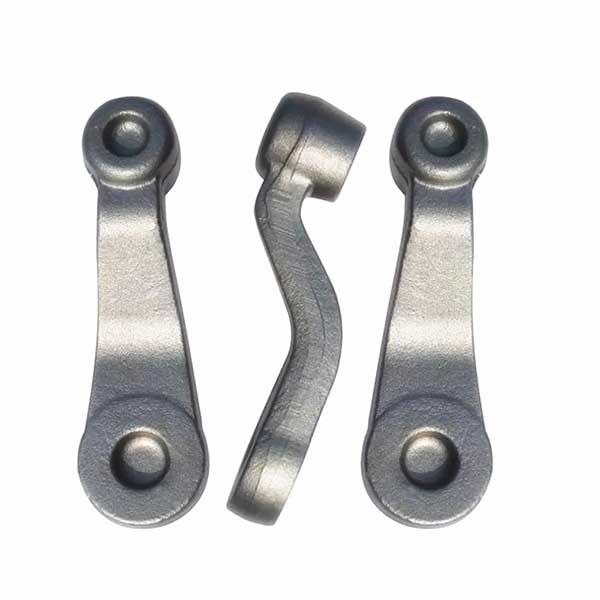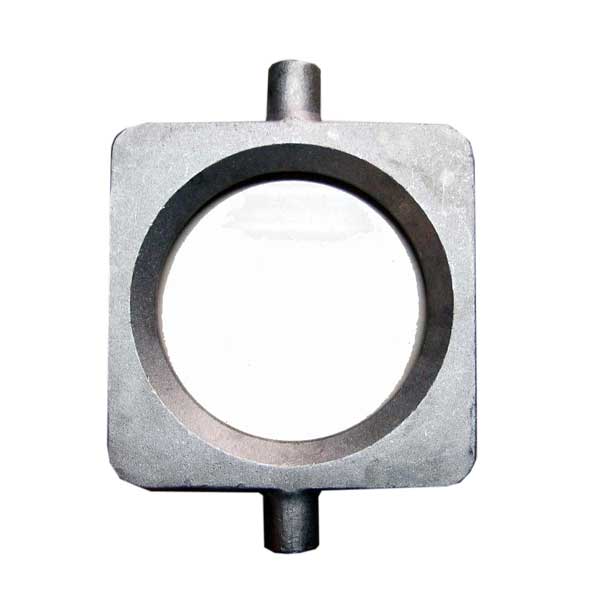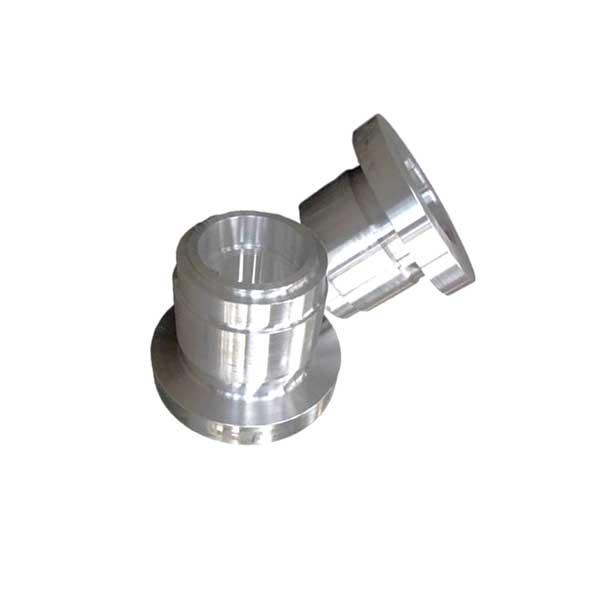Forging is a processing method that uses a forging machine to apply pressure to a metal blank to plastically deform it to obtain a forging with certain mechanical properties, certain shape and size. Forging (forging and stamping) is one of the two major components. Through forging, defects such as as-cast looseness generated in the metal smelting process can be eliminated, and the microstructure can be optimized. At the same time, due to the preservation of the complete metal streamline, the mechanical properties of forgings are generally better than those of castings of the same material. For important parts with high load and severe working conditions in related machinery, forgings are mostly used in addition to rolling plates, profiles or welded parts with simple shapes.
The initial recrystallization temperature of steel is about 727 °C, but 800 °C is generally used as the dividing line, and hot forging is higher than 800 °C; between 300 and 800 °C, it is called warm forging or semi-hot forging. called cold forging.
Forgings used in most industries are hot forging. Warm and cold forging are mainly used for forging parts such as automobiles and general machinery. Warm and cold forging can effectively save materials.
Process classification
According to the forging temperature, it can be divided into hot forging, warm forging and cold forging.
According to the forming mechanism, forging can be divided into free forging, die forging, ring rolling and special forging.

1. Free forging
It refers to the processing method of forgings that use simple universal tools or directly apply external force to the blank between the upper and lower anvils of the forging equipment to deform the blank to obtain the required geometric shape and internal quality. Forgings produced by the free forging method are called free forgings. Free forging is mainly based on the production of small batches of forgings. Forging equipment such as forging hammers and hydraulic presses are used to form and process the blanks to obtain qualified forgings. The basic processes of free forging include upsetting, drawing, punching, cutting, bending, torsion, offset and forging. Free forging is all hot forging.
Advantages: Free forging has the characteristics of flexible process, high versatility of equipment and tools, and low cost. Since free forging is formed gradually, the required deformation force is small, so it is the only way to produce large forgings (above 300T).
Disadvantages: low productivity, low precision forgings, high labor intensity, mostly used for single-piece and small batch production of forgings with simple shapes and low precision requirements.
2. Die forging
Die forging is divided into open die forging and closed die forging. The metal blank is compressed and deformed in a forging die cavity with a certain shape to obtain a forging. Die forging is generally used to produce parts with small weight and large batches. Die forging can be divided into hot forging, warm forging and cold forging. Warm forging and cold forging are the future development direction of die forging, and also represent the level of forging technology.
According to the material, die forging can also be divided into ferrous metal die forging, non-ferrous metal die forging and powder product forming. As the name implies, the materials are ferrous metals such as carbon steel, non-ferrous metals such as copper and aluminum, and powder metallurgy materials. Extrusion should belong to die forging, which can be divided into heavy metal extrusion and light metal extrusion.
Closed die forging and closed upsetting are two advanced processes of die forging. Since there is no flash, the utilization rate of materials is high. It is possible to complete the finishing of complex forgings in one or several operations. Since there is no flash, the stressed area of the forging is reduced and the required load is also reduced. However, it should be noted that the blank cannot be completely restricted. For this reason, the volume of the blank should be strictly controlled, the relative position of the forging die should be controlled and the forging should be measured, and efforts should be made to reduce the wear of the forging die.

3. Rolling ring
Ring rolling refers to the production of ring-shaped parts of different diameters through special equipment ring-grinding machines, and is also used to produce wheel-shaped parts such as automobile hubs and train wheels.
4. Special forging
Special forging includes roll forging, cross wedge rolling, radial forging, liquid die forging and other forging methods, which are more suitable for the production of parts with special shapes. For example, roll forging can be used as an effective preforming process to greatly reduce the subsequent forming pressure; cross wedge rolling can produce parts such as steel balls and drive shafts; radial forging can produce large forgings such as barrels and stepped shafts.
Forging die
According to the movement mode of the forging die, forging can be divided into pendulum rolling, pendulum rotary forging, roll forging, cross wedge rolling, ring rolling and skew rolling. Pendulum rolling, pendulum swaging and ring rolling can also be processed by precision forging. In order to improve the utilization rate of materials, roll forging and cross-rolling can be used as front-end processing of slender materials. Rotary forging, like free forging, is also locally formed, and its advantage is that it can be formed with a small forging force compared to the size of the forging. In this forging method, including free forging, the material expands from the vicinity of the die surface to the free surface during processing, so it is difficult to ensure accuracy. The forging force can be used to obtain products with complex shapes and high precision, such as forgings such as steam turbine blades with many varieties and large sizes.

The movement of the die and the degree of freedom of the forging equipment are inconsistent. According to the deformation limitation characteristics of the bottom dead center, the forging equipment can be divided into the following four forms:
1. The form of limiting forging force: hydraulic press that directly drives the slider.
2. Quasi-stroke limit method: hydraulic press that drives the crank connecting rod mechanism.
3. Stroke limitation method: mechanical press with crank, connecting rod and wedge mechanism driving the slider.
4. Energy limitation method: use the screw and friction press of the screw mechanism.
In order to obtain high precision, care should be taken to prevent overload at the bottom dead center, and to control the speed and mold position. Because these will have an impact on forging tolerances, shape accuracy and forging die life. In addition, in order to maintain the accuracy, attention should also be paid to adjusting the clearance of the slider guide rail, ensuring the rigidity, adjusting the bottom dead center and using the auxiliary transmission device.
Slider
There are also vertical and horizontal motions of the slider (for forging of slender parts, lubricating cooling and forging of parts for high-speed production), and the compensation device can be used to increase the motion in other directions. The above methods are different, and the required forging force, process, material utilization, output, dimensional tolerance and lubrication and cooling methods are different, and these factors are also factors that affect the level of automation.
Different forging methods have different processes. Among them, the process of hot die forging is the longest, and the general order is: blanking of forging billet; heating of forging billet; roll forging preparation billet; die forging forming; trimming; punching; straightening; Intermediate inspection to check the size and surface defects of forgings; heat treatment of forgings to eliminate forging stress and improve metal cutting performance; cleaning, mainly to remove surface oxide scale; correction; inspection, general forgings are subject to appearance and hardness inspections, important forgings also It must undergo chemical composition analysis, mechanical properties, residual stress and other inspections and non-destructive testing.

